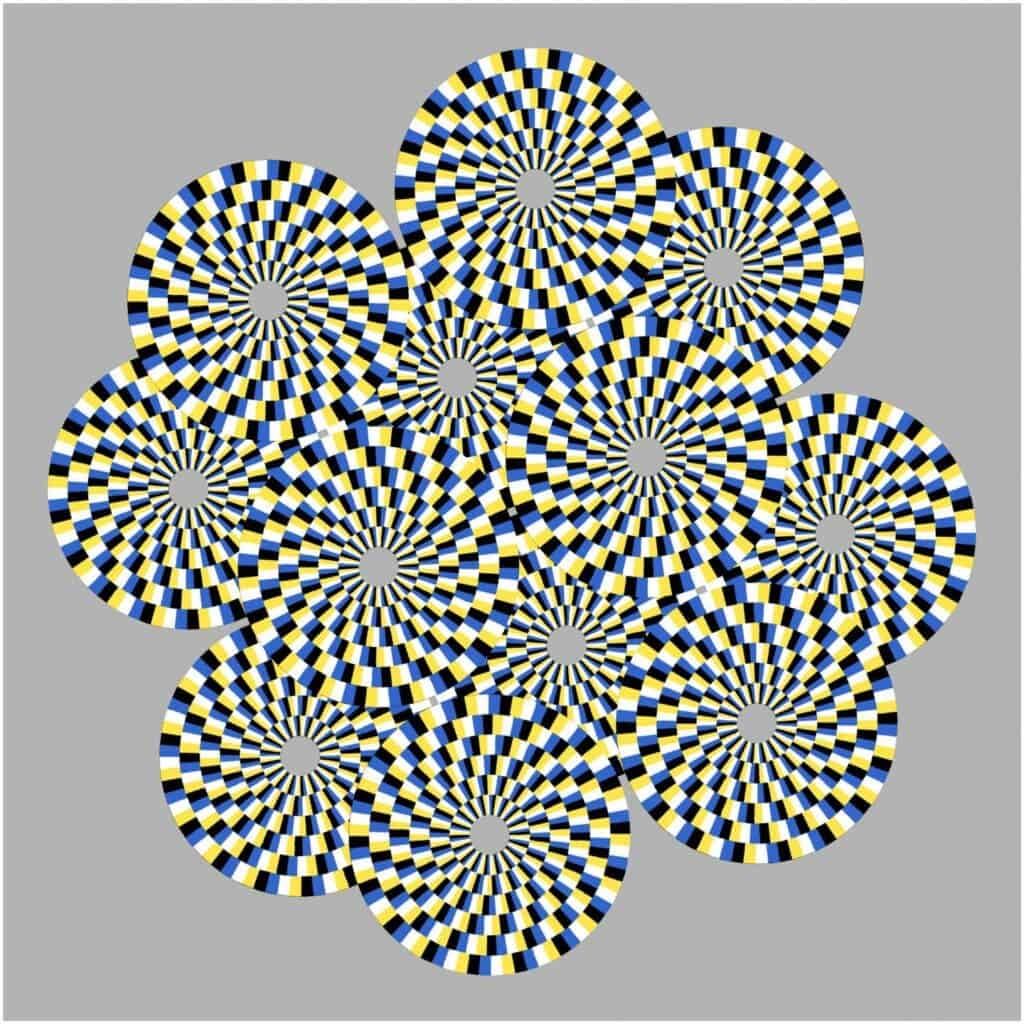
Some optical illusions can be truly mind-boggling and mystifying. But what’s even more intriguing is the neurological mechanism that underlies them. In a new study, researchers found that a fly’s eyes can also be tricked by optical illusions similarly to humans, perceiving stationary images as in motion. The researchers’ findings could explain why this phenomenon occurs.
“It was exciting to find that flies perceive motion in static images the same way we do,” Damon Clark, associate professor of molecular, cellular and developmental biology and of physics and of neuroscience at Yale University, said in a statement.
Clark and colleagues decided to mesmerize flies with optical illusions because the insects are very well studied and their tiny brains facilitate tracking the activity of neurons involved in the visual system.
Using an optical illusion similar to the one embedded in this article, researchers measured the behavior of lab flies. They found that the insects could indeed perceive motion in an otherwise static image, just like humans do.
When they sense motion, flies instinctively turn their bodies toward the object in motion. This is what also happened with perceived motion when presented with the optical illusions, which is how the researchers could tell for sure that flies could sense them.
By zooming in on specific neurons involved in detecting motion in the fly brain, the researchers detected a pattern of neural activity triggered by the static pattern.
When two specific types of motion-detecting neurons were turned off, the illusion effect disappeared entirely. What was intriguing is that when only one of the two neurons was turned off, the flies perceived the motion of the illusion in the opposite direction than they did with both neurons active.
Judging from these findings, the authors of the new study conclude that optical illusions arise from small imbalances in how different types of motion-detecting neurons contribute or fail to respond to certain imagery.
“The last common ancestor of flies and humans lived a half billion years ago, but the two species have evolved similar strategies for perceiving motion,” Clark said. “Understanding these shared strategies can help us more fully understand the human visual system.”
The findings were reported today in the Proceedings of the National Academy of Sciences.


